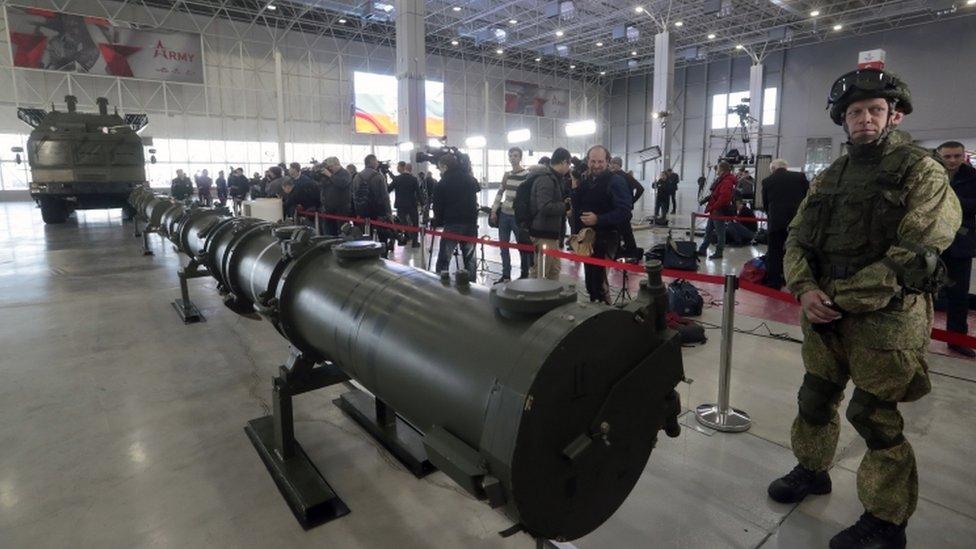INF nuclear treaty: US tests medium-range cruise missile
- Published
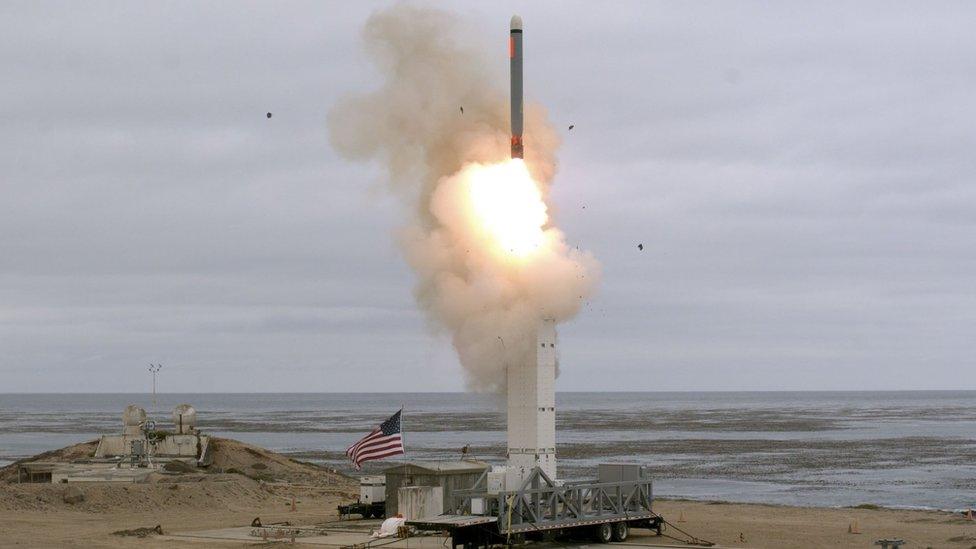
The Pentagon issued a handout photo of the missile test launch
The US has tested a medium-range cruise missile weeks after pulling out of a key treaty with Russia that banned such nuclear-capable weapons.
The Pentagon said it successfully launched the missile off the coast of California on Sunday.
Moscow accused the US of "escalating military tensions".
The US withdrew from the Intermediate-Range Nuclear Forces (INF) Treaty on 2 August after accusing Russia of violating it - a claim Moscow denies.
Analysts fear the collapse of the INF could spark a new arms race.
The Cold War-era treaty banned missiles with ranges of 500-5,500 km (310-3,400 miles).
The Pentagon said the missile, launched from the US-Navy controlled San Nicolas Island off the coast of Los Angeles, was "conventionally configured", meaning not nuclear-equipped.
Should we be concerned about an impending nuclear conflict?
"The test missile exited its ground mobile launcher and accurately impacted its target after more than 500km (310 miles) of flight," the US defence department said in a statement.
"Data collected and lessons learned from this test will inform the Department of Defense's development of future intermediate-range capabilities."
Russia called it a "cause of regret".
"The US has obviously taken the course of escalating military tensions. We won't react to provocations," Russian deputy foreign minister Sergei Ryabkov was quoted by state news agency Tass as saying.
What happened to the INF treaty?
Russia has been accused of breaching the terms of the treaty in the past, but earlier this year the US and Nato said there was evidence that Moscow was deploying a new type of cruise missile, the 9M729, known to Nato as SSC-8.
Russia denied the accusation and President Putin said it was a pretext for the US to leave the pact.
In February President Donald Trump set a 2 August deadline for the US to withdraw from the INF if Russia didn't come into compliance.
Russian President Vladimir Putin suspended his country's own obligations to the treaty shortly afterwards.
The US withdrew from the INF as it had threatened on 2 August, and US Secretary of State Mike Pompeo said: "Russia is solely responsible for the treaty's demise."
Russia's foreign ministry said the US decision to withdraw was "a grave mistake"., external
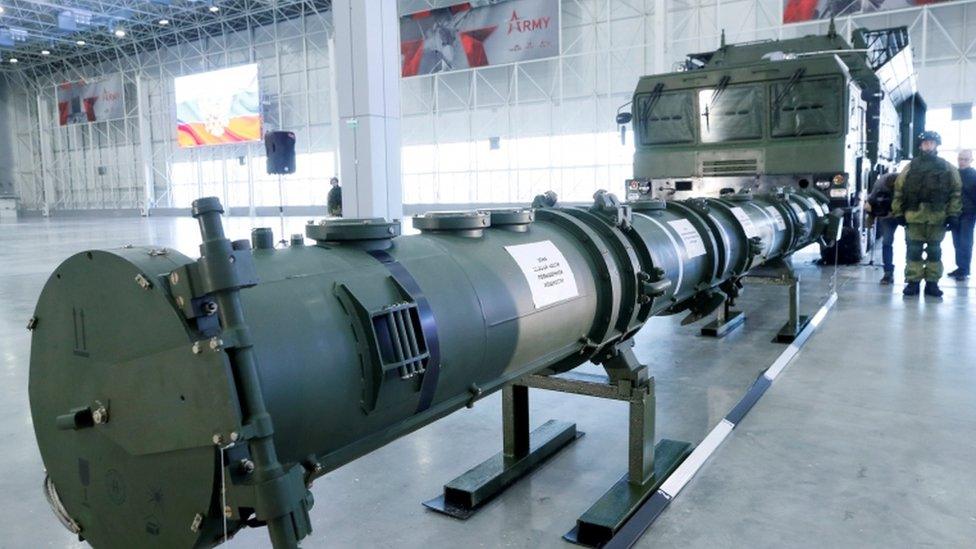
Russia's new 9M729 missile worries the US and its allies
The collapse of the historic agreement has led to concerns that it could lead to a new arms race between the US, Russia and China.
UN Secretary General Antonio Guterres said "an invaluable brake on nuclear war" had been lost.
"This will likely heighten, not reduce, the threat posed by ballistic missiles," he said, urging all parties to "seek agreement on a new common path for international arms control".
Nato Secretary General Jens Stoltenberg said the transatlantic alliance would "respond in a measured and responsible way to the significant risks posed by the Russian 9M729 missile to allied security".
But, he added, Nato "does not want a new arms race" - and he confirmed there were no plans for the alliance to deploy land-based nuclear missiles of its own in Europe.
Last month, he told the BBC that the Russian missiles were nuclear-capable, mobile, very hard to detect and could reach European cities within minutes.
What was the INF Treaty?

Soviet leader Mikhail Gorbachev and US President Ronald Reagan signed the treaty in 1987
Signed by the US and the USSR in 1987, the arms control deal banned all nuclear and non-nuclear missiles with short and medium ranges, except sea-launched weapons
The US had been concerned by the Soviet deployment of the SS-20 missile system in 1979 and responded by placing Pershing and cruise missiles in Europe - sparking widespread protests
By 1991, nearly 2,700 missiles had been destroyed
The two countries were allowed to inspect each other's installations
- Published3 August 2019
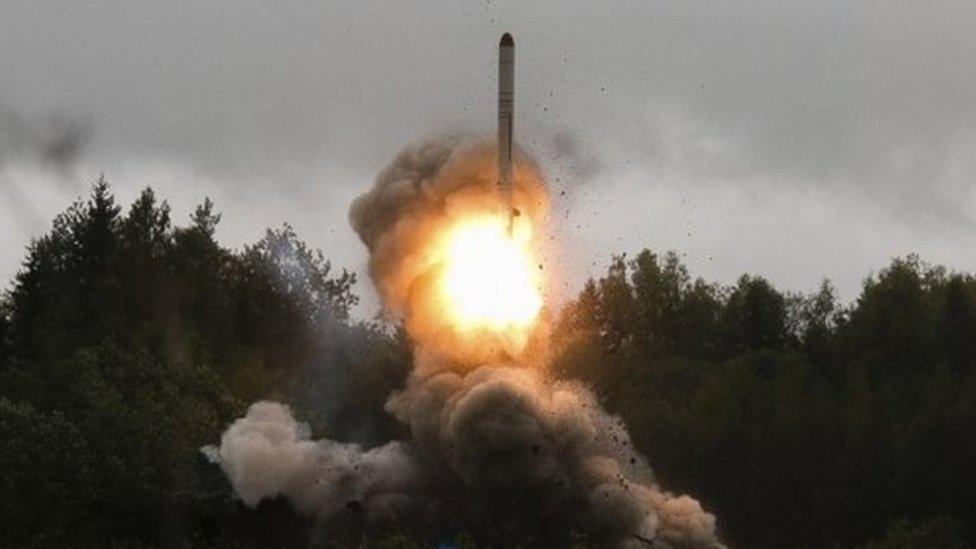
- Published2 August 2019

- Published18 July 2019
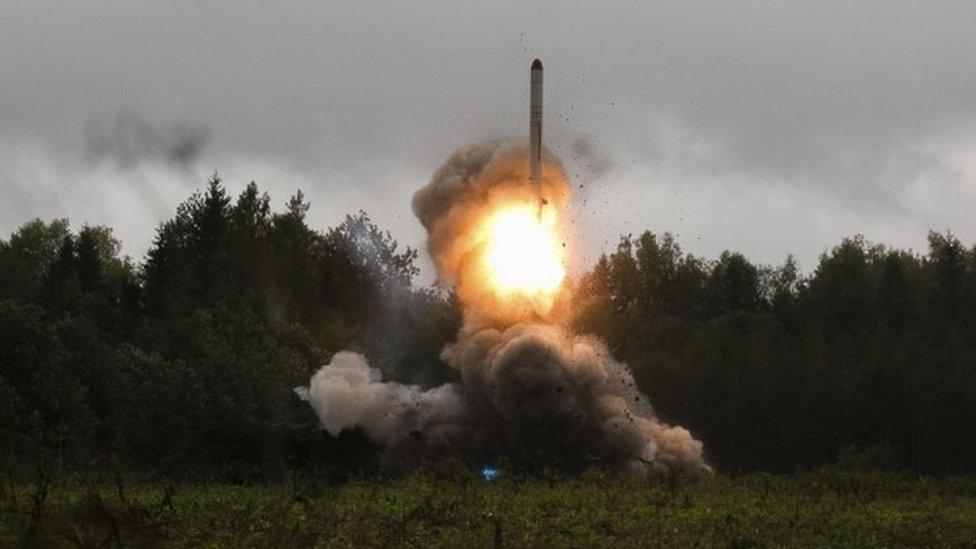
- Published2 February 2019
